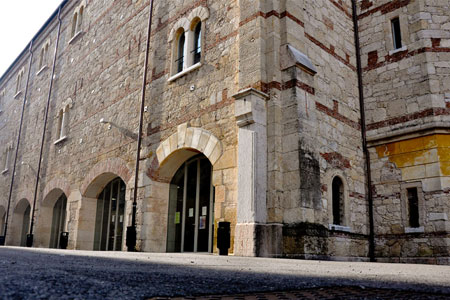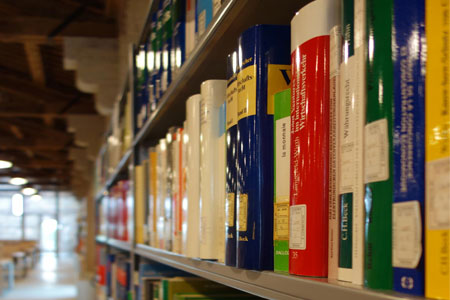Learning outcomes
-- Introdution ––
Modern macroeconomics was born with J.M. Keynes in 1936. His book "The General Theory" recalls the title of Einstein's famous paper. Such a parallelism is not completely out of place. In fact, one could argue that macroeconomics is to economics what cosmology is to physics. It studies the aggregate phenomena of an economic system. It does not inquiry on the infinitely small, such as a single firm or the behaviour of an individual (the field of microeconomics), but it deals with the overall forces of an economic system. Like cosmology, macroeconomics too asks ultimate questions on the “massimi sistemi”. In short, what is made the wealth of a nation, and how much is it, from where does such wealth come from, and where (i.e. to whom) does it end. It is not necessary to be a cosmologist to know that “il sole e le altre stelle” do exist. Equally, one can speak about GDP, aggregate consumption, industrial investment, inflation without knowing the subject matter involved in these phenomena. However, common sense apart, one cannot answer how the PIL is formed, who has produced it, how much it has been consumed or invested, and the effects these decisions have generated, without some training in macroeconomics.
-- First aim––
The first aim of the lectures consists to providing such basic training. The level of exposition will be introductory, but not superficial. Some basic mathematical knowledge is required (mainly on linear functions), since there will be an extensive use of graphics and equations. Three markets, that make up a typical economic system, will be examined in succession: (1) the good market, (2) the financial and monetary market, (3) the labour market. The laws of these three markets will be carefully analyzed, as well as their interactions in determining the economic equilibrium (or disequilibrium) of an economic system.
-- Second aim––
But macroeconomics is not cosmology. If cosmology cannot usually change the phenomena it studies, this is not the case of macroeconomics. Similarly to what happens to other social sciences, macroeconomists aim at knowing the world not just for the sake of knowledge, but also for the sake of improving the world. Coherently, the second aim of these lectures will be to point out the role played by economic policy (in the three markets) in promoting – or at least in our difficult times, in preserving) the level of wealth achieved by the developed world.
Syllabus
Lectures will be both on theory and on training. Students will be asked to take weekly exercises and test, so to verify their progress to the preparation for the final exam.
The main topics that will be addressed are the following:
1. Macroeconomics: History of Economic Thought and Economic History
2. National Accounts and further Empirical Evidence
3. The market of goods
4. The financial and monetary market
5. The IS-LM model
6. The labour market
7. Unemployment and inflation: the Phillips curve
8. The AD-AS equilibrium model
9. Economic growth (including Harrod-Domar model)
10. The accumulation of capital and the technical progress
11. The role of expectations and inflationary effects
12. The open economy
13. Macroeconomics and Economic Policy
Textbook basic References (see below in the other box the detailed
bibliography):
Blanchard et al. (2014). It is ok also the previous edition Blanchard:
Blanchard et al. (2011) and (2009). Manual of solutions: Findlay (2014), or Findlay (2011), or (2009) according to the edition of the main textbook.
Assessment methods and criteria
Mid-term exam:
Written exam with multiple-choice test and quantitative exercises. The outcome of the mid-term exam will contribute as a "bonus" to determine the mark of the final exam. The latter is the same for all students. Let us define as Part A, the programme included in the mid-term exam. The rule of the "bonus" is the following. For those that have passed both the mid-term and the final exam, the mark of the latter will be computed taken into account the marks of the exercises of the Part A, either of the final exam itself or of the mid-term exam, according to which one is higher for individual argument of Part A.
Final exam:
Written exam divided in two parts:
a)Multiple-choice test (20 questions)
b)Numerical exercises (4 exercises).
The final exam covers the whole syllabus. Students that have passed the mid-term exam will be assessed as follows. The final mark of the written exam will be the sum of the weighted (35%) mark of the mid-term exam and the wighted (65%) mark of the final exam. Students may renounce the mid-term mark. In that case the assessment will be made only with the final exam.
Oral exam for those that have passed the written exam with a mark of 17 or higher.
a) Compulsory for those with a mark between 17 and 18 in the written exam.
b) Optional for those with a mark of 18 or higher in the written exam. Students that have taken weekly monitored test and exercises can asked a bonus of a maximum of 10% of the mark of the written exam.
STUDENTS WITH 10CFU, 9CFU e 6CFU ENROLLED IN THE PREVIOUS YEARS
From this academic year students from old undergraduate courses, no longer active, should refer to this course. According to the difference of CFU, between the old and the present course, there will be variations (and integrations) of the basic programme.








